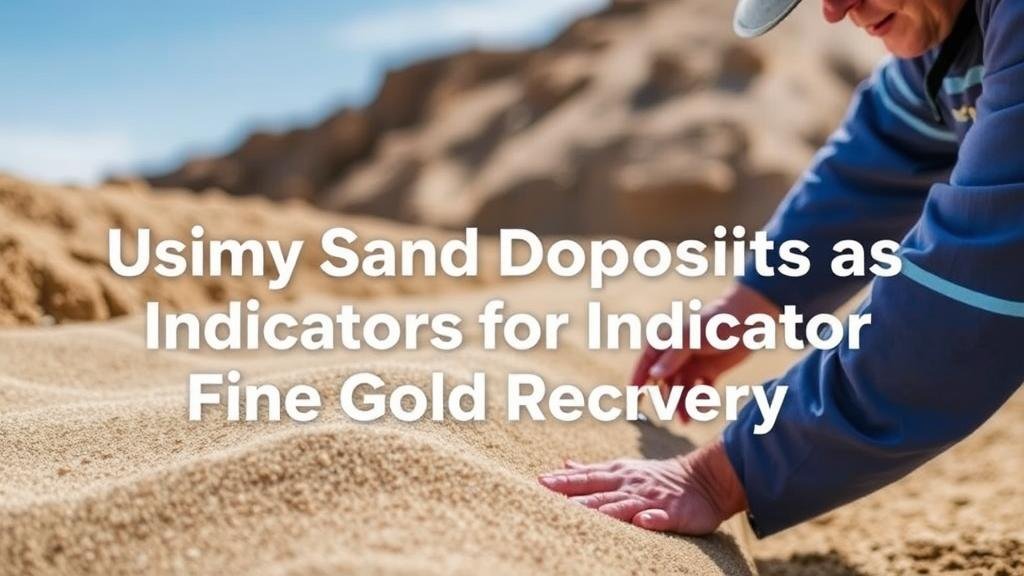Using Heavy Sand Deposits as Indicators for Fine Gold Recovery
Using Heavy Sand Deposits as Indicators for Fine Gold Recovery
Gold prospecting relies on various geological and environmental indicators, one of the most significant being heavy sand deposits. These deposits can signal the presence of fine gold, making them a critical focus for miners and geologists alike. Understanding how to identify and utilize these deposits can enhance gold recovery efforts and improve overall resource management in mining operations.
Understanding Heavy Sand Deposits
Heavy sand deposits are formed through the natural processes of erosion, transport, and sedimentation. typically consist of minerals with a higher specific gravity than common beach sand, such as magnetite, hematite, and zircon, which can indicate underlying mineral richness, including fine gold.
These deposits often occur in areas with significant water flow, such as river bends or inside ancient riverbeds. As lighter minerals get washed away, heavier particles settle first, creating concentrated deposits. The most effective identification of heavy sand deposits involves examining the stratigraphy of sediment layers that have undergone extensive weathering and sorting by water action.
Indicators of Gold Presence
Though the connection appears obvious, several factors can confirm the likelihood of gold associated with heavy sand deposits:
- Specific Gravity Testing: Gold has a high specific gravity (around 19.3), and simple tests involving the weight of mineral samples can help identify likely gold carriers.
- Mineral Composition: Heavy minerals often found in sand, such as magnetite, can co-occur with small gold flakes or nuggets.
- Location History: Areas with historical gold mining activity or known gold occurrences typically have elevated chances of fine gold present in heavy sand deposits.
Case Studies and Real-World Applications
Numerous mining operations have successfully harnessed the potential of heavy sand deposits to aid in fine gold recovery. One notable example includes gold mining ventures along the Klamath River in California, where extensive studies have shown that certain sedimentary layers harbor higher concentrations of both heavy minerals and fine gold.
In this region, miners employ methods such as panning and sluicing, which capitalize on the natural stratification of heavy sands. By targetting areas with rich heavy mineral content, miners can enhance their chances of recovering gold particles often missed by standard mining practices.
Challenges in Fine Gold Recovery
While the identification of heavy sand deposits serves as a useful indicator for fine gold, several challenges can hinder successful recovery:
- Small Particle Size: Fine gold particles can be easily separated from heavy minerals, but their small size often makes them difficult to collect efficiently.
- Environmental Regulations: In some jurisdictions, strict environmental controls restrict mining activities in sensitive areas, complicating the recovery process.
- Economic Viability: The economic costs associated with recovering fine gold from heavy deposits can sometimes outweigh the potential profits, particularly in low-grade areas.
Actionable Takeaways
For prospectors and miners aiming to optimize fine gold recovery from heavy sand deposits, consider the following actionable strategies:
- Conduct Detailed Analysis: Use specific gravity tests and a thorough study of sedimentology to assess the potential of your target area.
- Employ Modern Technology: Use advancements in mineral tracking techniques such as X-ray fluorescence (XRF) to assess heavy mineral content accurately.
- Stay Informed: Keep abreast of local mining regulations and sustainable practices to ensure compliance and minimize environmental impact.
To wrap up, heavy sand deposits serve as a crucial indicator for fine gold recovery efforts. By understanding their formation, identifying geological markers, and employing strategic recovery methods, miners can enhance their efficiency and success in the quest for fine gold.



